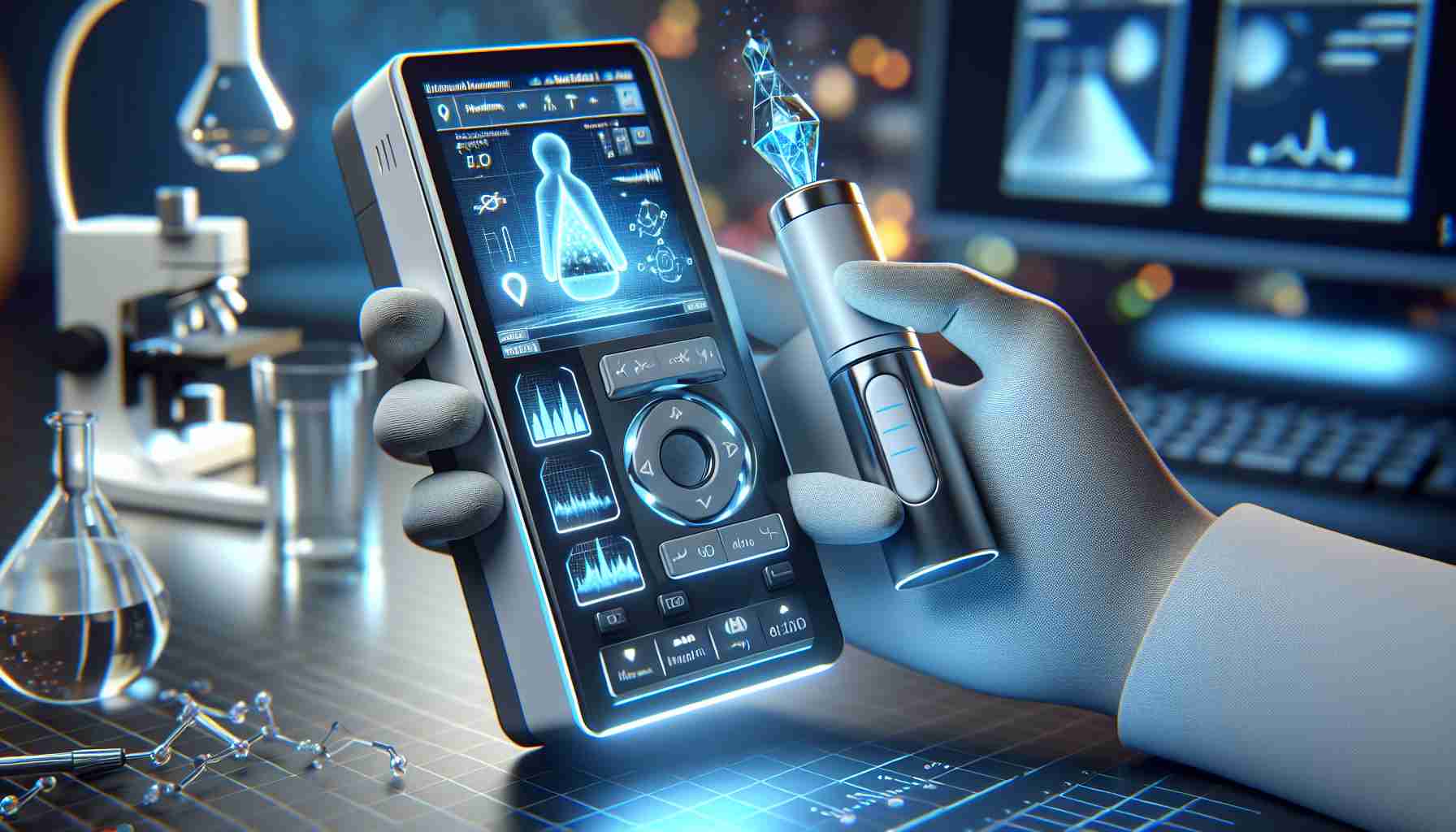Imagine effortlessly identifying the safety of foraged berries or swiftly detecting harmful substances in disaster-stricken areas through a portable spectrometry device. Dr. Peter Rentzepis, an innovator at Texas A&M University, has crafted a revolutionary handheld system resembling a Raman spectrometer.
This cutting-edge technology utilizes a laser to interact with molecular vibrations, scattering light elastically and inelastically to provide a unique molecular signature. The compact design integrates lenses, a diode laser, and a diffraction grating, all captured by a smartphone camera for chemical composition analysis.
Rentzepis’ invention is a cost-effective alternative to traditional spectrometers, offering quick material identification on-site. Simple to use, the device requires a smartphone behind the transmission grating, recording the Raman spectrum of the sample to enable rapid analysis.
The applications of this portable spectrometer are vast, with potential breakthroughs in medical diagnostics, environmental monitoring, and food safety assessments. From detecting pathogens for disease management to identifying pollutants in water sources, this innovation is set to revolutionize various industries.
Furthermore, as smartphone technology continues to advance, the integration of portable spectrometers into everyday devices marks a new era of scientific analysis and health monitoring capabilities. While challenges remain in ensuring accuracy and user-friendly interfaces, the widespread adoption of these devices could reshape how we approach material identification and analysis.
Rapid Detection and Analysis Through Handheld Spectrometry Innovation: Unveiling New Possibilities
In the realm of spectroscopy advancement, Dr. Peter Rentzepis’ handheld spectrometry innovation at Texas A&M University has sparked excitement for its potential applications beyond traditional boundaries. While the previous article shed light on the basics of this revolutionary technology, there are additional intriguing facts to explore and contemplate.
Key Questions and Answers:
1. How does the handheld spectrometer handle complex mixtures?
– The handheld spectrometer’s software algorithms are designed to decipher complex mixtures by comparing the obtained Raman spectra with known databases, enabling accurate identification even in intricate scenarios.
2. What is the range of detectable substances for this innovative device?
– Beyond simply analyzing chemical compositions, the handheld spectrometer can identify a wide array of substances, including explosives, pharmaceuticals, and even certain types of biological materials.
Key Challenges and Controversies:
1. Accuracy vs. Speed: One of the primary challenges associated with handheld spectrometry is finding a balance between rapid detection and analysis accuracy. Striking the optimal equilibrium between these factors remains an ongoing challenge for researchers and developers.
2. Data Interpretation: Another crucial aspect is the interpretation of data generated by the spectrometer. Ensuring that users can understand and interpret the results correctly poses a significant challenge, particularly in field applications where expertise may be limited.
Advantages and Disadvantages:
Advantages:
– Portability: The compact design of handheld spectrometers allows for on-the-go analysis, making them ideal for fieldwork and fast response situations.
– Cost-Effectiveness: Compared to traditional spectrometers, handheld versions offer a more budget-friendly option for organizations and researchers.
– Versatility: The range of potential applications, from environmental monitoring to food safety assessments, highlights the versatility of this innovative technology.
Disadvantages:
– Calibration Requirements: Maintaining accurate calibration can be challenging, requiring regular adjustments to ensure precise measurements.
– Data Complexity: Interpreting complex spectral data may require specialized knowledge, limiting the accessibility of the technology to a broader audience.
– Battery Life: The reliance on battery power for portable operation can be a limiting factor in prolonged field use, necessitating careful power management strategies.
As the development of handheld spectrometry technology continues to evolve, addressing these challenges and maximizing the advantages will be essential for realizing the full potential of this innovation.
For further exploration of the latest advancements in spectroscopy and related fields, visit Texas A&M University for cutting-edge research and insights into the future of scientific analysis.























